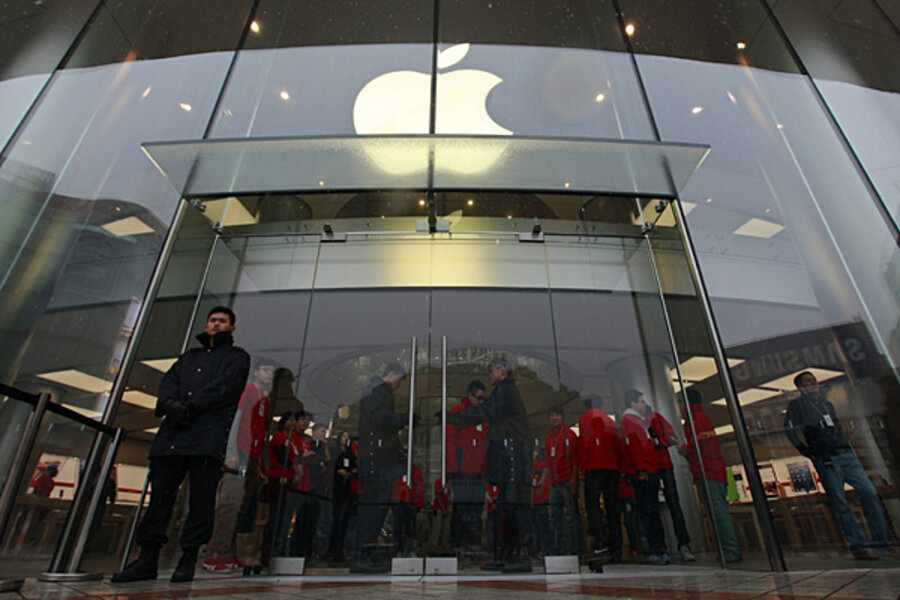Apple stock slumps. What's behind the slide?
Loading...
The beating Apple took last week is one for the ages. It's not that the 4% it dropped this week is such a huge decline, it's more that the stock is so widely held (I own some for clients) and "in such good shape."
This is the hard part of investing - understanding the psychology shift in a name or a theme which may or may not precede an actual fundamental shift.
In the past week alone, Apple's seen $38 billion lopped off its market cap. With the stock closing at $509 yesterday, it's lost 200 points per share from the September high or $180 billion in total market cap. To put that into perspective, $180 billion is one McDonalds plus one Disney. It's Nike plus Starbucks plus Ford Motor plus Time Warner. This is a demented amount of lost capitalization for such a short period of time and in so healthy a company.
The sell-off has been alternately explained as a tax-gain harvesting thing ahead of the Cliff (when it began selling off it was up 50% on the year and it's gained 8000% over the past decade). This morphed into concern over Samsung's continued market share gains which this week morphed into concern over a chilly reception for the iPhone 5 in China. And without a doubt, there are people who are now selling it for no specific reason; they're just getting out because everyone else is getting out. The stock is the most widely-held position by hedge funds and one of the most widely-held by mutual funds. It is the largest component of the NASDAQ (at a dominant 18%) and also the largest wheel in the S&P 500.
In the first half of 2012 it was the must-own stock, money managers had no shot of outperforming the benchmark minus an overweight to Apple. In the second half, this has completely reversed itself. The darling of summer is the pariah of the holiday season.
And now everyone who's associated with it is licking their wounds. I suspect the stock has to make a trip below $500 here, if only to test the depths of the sellers' desperation to be rid of it. The UBS analyst Steve Milunovich, whose target has declined to $700 from $780, has suggested that the shareholder base will now transition from growth guys to value guys. If he's correct here, that transition takes a long time - years, I've seen it at work.
But is it cheap yet?
Yes. It's been cheap but now its foolishly cheap, so long as estimates don't come down very much more from these levels. Here's Morningstar on Apple the value stock
Just because a stock pays a dividend, it doesn't mean that its growth days are behind it. Take Apple (AAPL) for example. The company paid its first dividend this past August but it is still projected to grow earnings by 21% per year during the next five years, more than double the 9% expected earnings growth rate for the S&P 500 Index, according to consensus estimates from Thomson Financial. Apple pays a quarterly dividend of about $2.65 per share. That equates to a dividend yield of about 2.0%, just shy of the 2.2% dividend yield on the S&P 500. Apple's dividend payout ratio, or the percentage of earnings paid out as dividends, is about 22%, based on the consensus forecast of $49.26 in per-share earnings for the next year. The conventional wisdom is that the higher the payout ratio, the lower the future earnings growth.
So, Apple is growing earnings twice as fast as the rest of the S&P, trading at a discounted multiple despite that, yields 2% and holds over $100 billion in cash or $130 per share, giving it the flexibility to return even more to shareholders or buyback gobs of stock.
But momentum works both ways and trend has been a vicious one. The technicians won't touch it here on short-term time frames (although its coming right into the major supportive up-trend line on the weekly chart) and the growth-at-a-reasonable-price (GARP) gang is already all-in, they've been in and probably cannot buy much more unless they take in more dollars.
And so the Cloverfield monster that is Apple continues to knock down everything in its path, leveling Stock Market City.








